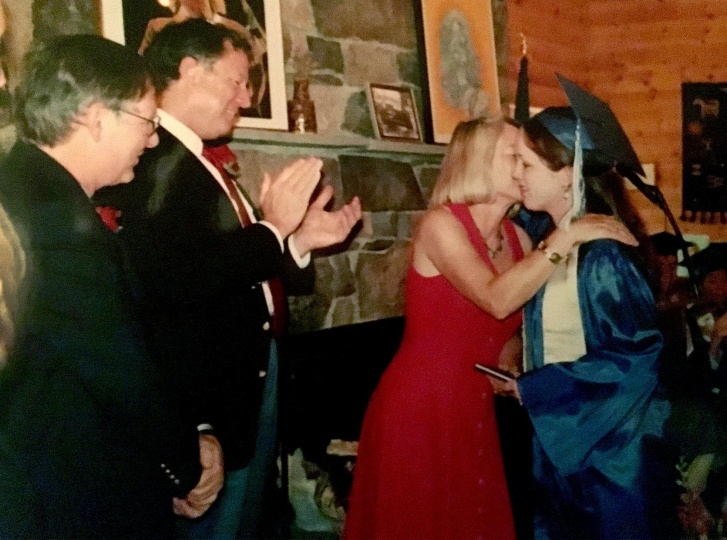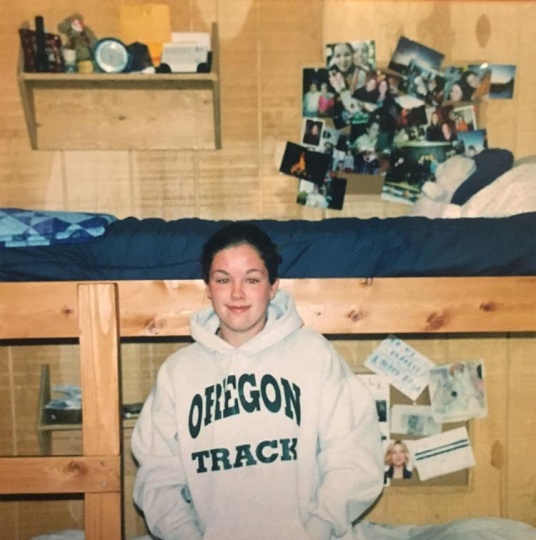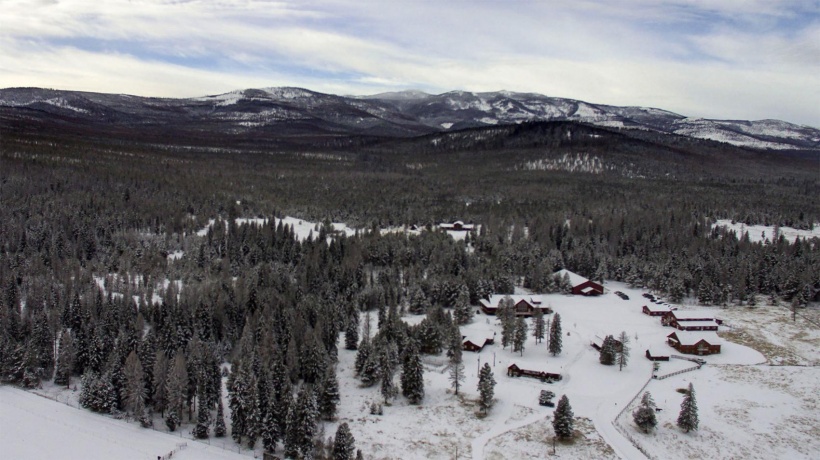Troubled kids, troubled system
Life and death at Montana Academy
By Cameron Evans • Originally published on January 22, 2019
MARION — In January 2017, Ben Jackson arrived in Marion, Montana, where he would spend the last six weeks of his life. The blond, freckled 16-year-old had traveled from his hometown in Colorado to attend Montana Academy, a residential treatment program for struggling teens.
Montana Academy, located near Marion, opened in 1997 as a way to "move psychiatric care out from under hospital overheads and to reduce the cost" for teenagers that could be treated on an open ranch, co-director John McKinnon said. A boy from Colorado with severe depression killed himself there in 2017.
“It’s really defeating when you do everything you can and it’s not good enough,” said his father. “When a kid gets to a place where you feel like you can’t keep him safe at home anymore, you have to do something.”
They enrolled him in a wilderness treatment program in Colorado, which appeared to help Ben significantly.
“He was like a different person when we went up to visit him. We thought, ‘This is great.’ He's sharing his feelings and emotions with us, and we were learning how to communicate. We were under the impression that that would continue at Montana Academy.”
The wilderness program staff recommended Ben attend a longer-term residential program to solidify his progress and suggested Montana Academy. That sequence through programs is common in the industry — nearly all students at Montana Academy outside Marion go through a wilderness program first, according to student interviews and an interview with co-director John McKinnon.
Top-notch program
Ben’s father said Montana Academy was supposed to be “the Harvard of these places, a real top-notch program.” It cost about $8,000 a month, plus fees, to send his son there, he said. (The Montana Academy website now lists monthly costs at $8,750, along with a $2,000 acceptance fee and monthly $150 charges for student allowances.) They visited the campus together, and met with the school director, who assured him the program could accommodate Ben’s health needs.
All of Montana Academy's management is certified and licensed, according to its state licensing application. It was opened by two psychologists, a psychiatrist and a social worker who had grown disillusioned with treating youth in crisis in a hospital setting.
John Santa, a cognitive psychologist with a doctorate from Purdue University, opened the academy in 1997 with co-director McKinnon and their wives. McKinnon was the clinical director of Adolescent Psychiatry & Substance Abuse at the Charter Hospital of Fort Worth, Texas, before moving to Montana. He then became the medical director of Pathways Treatment Center in Kalispell.
The pair started the academy, McKinnon said, to escape the “constraints” of managed care: the growing influence of insurance companies on their work with patients.
“Our mission was to move psychiatric care out from under hospital overheads and to reduce the cost, and to do that for selected kids who were suitable for treatment on an open ranch,” he told the Missoulian.
In the first few years, they accepted teens with 50 different diagnoses of mental disorders, “everything from trauma to major depression, to suicidality, to anxiety syndromes, to various addictions and so on,” McKinnon said.
As children arrived at the ranch, McKinnon said he and his wife Rosemary began to notice a pattern in interviews with parents.
The way parents described their children fit into five categories, which are now written on the Montana Academy website: “selfish self-preoccupation and self-importance (narcissism); an obliviousness to others [sic] feelings (lack of empathy); a failure to connect present behavior to future outcomes (lack of goals, plans or reflexive anticipation of consequences); a ‘puppet’ quality in close relationships; and concrete, selfish ethical thinking (a lack of abstract or social moral ideals, such as ‘honor’ or ‘the good of the family’).”
Montana Academy co-owner Carol Santa kisses Holly, who asked that her last name not be used, at her graduation in 2004 as co-owners John Santa (far left) and John McKinnon look on.
“By the time I got to 5 they almost invariably said to me ‘Oh, my God, Dr. McKinnon, how did you describe my daughter so accurately? You’ve never even met her.’ And they would say that so often that Rosemary and I would look at each other and wink. It was literally funny. I could make them say that just by rehearsing 1,2,3,4,5.”
McKinnon said he realized that those five things were what parents wanted them to fix; that the heart of the problem wasn’t depression or anxiety or drug use, it was what McKinnon later dubbed “immaturity.” He compared the troubled teenager’s developmental stage to that of a 3-year-old.
“At the heart of it all, they were beginning to feel like their daughter was beginning to be a jerk and somebody who was failing and somebody who wasn’t going to get to college,” he said. “And if she wasn’t careful or he wasn’t careful, he’s going to end up in Sing Sing [prison] because he doesn’t seem to have a conscience or any restraint.”
Diagnosis: Immaturity
McKinnon said this immaturity theory became the basis for treating every one of the roughly 70 students Montana Academy housed, including students like Ben Jackson, whose father said he had severe depression.
Immaturity, McKinnon said, "turned out to be the common denominator among the students we were sent.''
To treat teens' problems and help them mature, McKinnon later theorized, requires two things: recognition of their trauma or history, and setting limits.
“You have to think about Montana Academy as a place where ‘no’ is built into the structure,” he said.
On Feb. 12, 2017, about six weeks after Ben Jackson's father dropped him off in Montana, the youth killed himself.
“My feeling is that they look at the money and they don’t necessarily look at the kid,” Ben's father said. “It turns my stomach, quite frankly. I'd really research every aspect of these programs before you send your kid to one. We thought we did. You send your kid to a place where you think they’re the experts and they may or may not be. Who knows?”
Ben’s father is still trying to understand what happened to his son in those six weeks. He wonders if Ben might have said something about his worsening mental health had he been able to talk to his parents without supervision.
“All the calls are monitored and all the communication is monitored going in and out, so I’m not sure how you can really judge where somebody is when they could get in trouble for something they say,” he said.
Students don’t get unsupervised calls with parents until they reach the third level in the program, which can take months, and at that point calls are limited to 15 minutes, once a week, according to the program’s policies and procedures, obtained by the Missoulian through a records request.
After Ben’s death, John McKinnon wrote to parents in a March 31, 2017, newsletter about the youth’s suicide: “We would be kidding ourselves if we thought we could make an open ranch completely safe for a suicidal teenager. Moreover, if we ever did succeed, it would only be at the cost of removing all door-knobs and shoe-laces, mounting cameras in every toilet and shower. In so doing, we would give up the dream that animated the creation of Montana Academy: a civilized, nearly-normal adolescent high school culture situated on a ranch that, quite on purpose, was not a psychiatric ward, where carefully-selected immature teenagers could be helped to finish growing up without having to be locked up.”
Students' views
The Missoulian spoke with eight students who attended Montana Academy between the years 2001-2016. None is from Montana, and some spent up to two years living there. Several said they attended the program because they were depressed, not because of behavioral problems.
Sean Colin, a former resident at Montana Academy, said the residential treatment program worked for him, but he believes some elements, like banning communication as punishment, could be a "nightmare" for more troubled peers.
“If you’ve got these issues that are so severe it’s altering the course of your life, you should seek more specialized treatment than MA,” he said.
Rebecca Payne, who attended Montana Academy from 2009 through 2011, was dealing with trauma from sexual abuse and had an eating disorder when she arrived from out of state. She was 14 when her mom decided to send her to a wilderness program, and then to Montana Academy. She was once put on “Solo Reflection Time” — isolation — for a week for passing notes between two of her classmates, she said.
She ate meals separately from everyone else, and if anyone interacted with her, they would be put on social isolation as well, she said.
“It drove me crazy very quickly, because in that place you don’t have anything but the people around you. That’s all you have. And when you’re denied that in this horrible place, it took a toll. The days go by so slow. That’s about when I started adhering to the program because I didn’t want that to happen again, I didn’t want to risk being by myself again.”
Tamara Cherwin said she attended Montana Academy for 22 months in 2010-2011, after therapy and medication failed to help her serious depression, and professionals recommended Montana Academy. She said she went there willingly because she wanted to get better. Her mom, Cindy Cherwin, said she talked to other parents whose kids were in the program, who said all positive things about it. She visited the campus, and spoke with the directors, who explained the program’s theory for treating teens with behavioral and mental health issues.
“The word they used most was ‘immaturity’ — the idea that there was an immaturity happening,” Cindy Cherwin said.
The directors explained that it would be a therapeutic program, but within the framework of a structured environment, Cindy Cherwin said.
But Tamara Cherwin said that Montana Academy “treated my anxiety and depression as if it was a behavioral problem. ‘You are the reason you're depressed, you're the reason you're anxious.’ It was all about taking accountability and not being entitled. One of the first things they established with me is if I tell my parents negative things about what’s happening, that's called manipulation.”
Cherwin took these things to heart, trusting the program and believing her depression and anxiety were symptoms of her flawed character.
Her peers also told her she had to change herself. “In these group therapy sessions, people would be encouraged to say what they thought about a single individual,” she said. “So there was encouragement from team leaders for people to vent and question people’s character.”
To advance and earn greater privileges, she said, "you had to characterize other people on your team and read aloud what you thought about them. These were all supported and encouraged. I don’t remember being able to say, ‘This hurts me.’ They would seize on that and say ‘Tamara, you care too much what other people think.' But at the same time, these girls could character-attack me.”
Colin said it felt as if there was a “pursuit of conflict” in these sessions, an approach called "confrontational therapy'' for which experts say there is no scientific evidence of success.
“You speak a lot about group dynamics and you discuss people's flaws, and we did it three times a week,” Colin said.
Students were also expected to tell on one another for breaking rules, according to the eight students who spoke to the Missoulian. If someone knew a rule had been broken and didn’t turn their peer in, they too would be punished.
“This is the environment,” Cherwin said. “Being punished if you don’t help them discipline and police the behavior of everyone.”
Montana Academy Head of School Matt Keenan stressed in an interview with the Missoulian and in follow-up emails and telephone calls that the program strives for quality.
"We take our own steps to go far beyond state regulatory standards outlined by the PAARP board to ensure that we are in compliance by objective, outside agencies with whom we have no affiliation, and we are visited and evaluated by these agencies on a regular basis," he wrote in an email.
He cited oversight and site visits by national industry groups such as the Joint Commission on Accreditation of Healthcare Organizations and others, although those groups have no regulatory powers.
The punishment
Montana Academy’s policies and procedures spell out the punishment for what the program calls “felonies,” which include running away, self-harm such as cutting, or offensive dress.
For “felonies,” staff are instructed to give the student “a serious comeuppance, which should produce anxiety and a major disruption in the life of the student,” the policies say, as well as “an isolation from fellow students and from all negative student support.”
Physical labor and chores are another consequence, which the program calls “drudgery.”
Drudgery can include clearing and raking the ground in the forest, cutting off all lower branches in a roped-off patch of forest, and re-seeding and watering them. It can also include “major scrub or polish tasks,” such as washing all the windows in a dorm, cleaning the ovens or waxing the floors. The tasks could be inside or outside “so as to suit the convenience of team supervisors,” the policy said.
Students who run away with another student, have sexual intercourse, or attempt suicide — all considered a “capital offense” — receive the worst punishment.
“Consequences include: immediate suspension of all privileges, return to bottom (privilege level), NO phone calls, NO mail in or out, and social isolation (meals, free time, study hall, experientials).”
A student might also be hospitalized, or “exiled” as the policies refer to it, before being returned to Montana Academy at the bottom level.
Holly in her dorm during her first week at Montana Academy.
Holly was recently granted legal disability in Oregon for the PTSD she has from her time at Montana Academy.
Looking back, Cindy Cherwin said her daughter did appear to improve at Montana Academy. She was socializing, she applied to colleges. But, she said, “the price she paid for that improvement was too high. I can’t go back in time, but I wish she hadn't gone there. … I would never want to risk her life, but if we could turn back time, I wish we had turned left instead of right.”
In the months and years after she left Montana Academy, Tamara Cherwin’s stability unraveled.
Montana Academy outside Marion in Flathead County is licensed to house between 50 and 100 teens, costs more than $8,000 a month and its staff is licensed and certified. Students who attended the program between 2001 and 2016 provided the Missoulian with mixed reviews on the treatment they received for eating disorders, drug abuse and sexual abuse trauma.
"After MA, I still believe that every person in my life thinks of me as incredibly annoying and I have to change myself for people to like me.”
She’s seeing a new therapist, who helped her link her worsening trauma to her experience at Montana Academy. Tamara said the new therapist builds her up and teaches her to trust her feelings.
“The messaging from MA was ‘Be scared, you will have to fight your whole life to fend off the ever-present depression.’ My therapist is teaching me, ‘This isn’t your life, this isn’t inevitable, you have the tools to get better.’






































































































